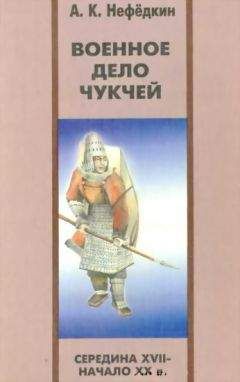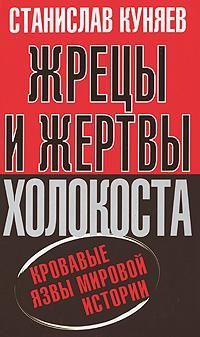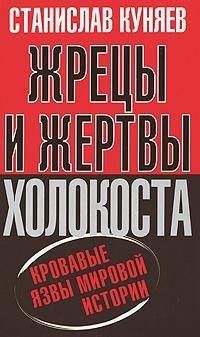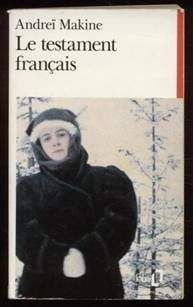Chronological frames of this research could be determined by the second half of the 17th century with the appearance of first authentic written evidences, which were mainly Cossack reports. On the other hand must be mentioned ethnographical and oral folklore materials related to events of the 18th century. Although armed conflicts between Chukchi and their neighbours, mostly Russians and Koiyaks, stopped in the end of the 18th century, Chukchi raid Alaska Eskimos up to 40's of the 19th century and from time to time struggled with each other in individual collisions or family encounters during first quarter of the 20th century. Most part of evidence about Chukchi belongs to the 19th—20th centuries.
As long as the Coastal Chukchi and Asiatic Eskimos resemble both in material culture and warfare, information about them should be considered together. The majority of Chukchi were nomads and reindeer-breeders and most part of materials concerns them.
Military organisation. In case of any menace all adult men were warriors. Council, where rich herd-owners and patriarchs played a leading role, decided major political matters within kin group. In intertribal contacts elders made decisive final opinion and their representatives were able to make peace on behalf of the group. At the same time existed council of several «friendly» kin groups, which functioned from time to time as required. Council of patriarchs that also played important part in everyday life was in charge of preparing warfare plans.
For the military campaign Chukchi were choosing the war leader whose position usually coincide with status of the family master. In the 18th century large coalitions consist of separate tribal groups, headed by toions (chiefs) who were in charge both in war and politics, begin to form. Besides, this position could be hereditary. However because of armistice this position disappeared from majority of Chukchi groups. According to Chukchi traditions relatives owe to help each other in all matters, that is a typical psychology of kindred group, fighting for its survival. Genetic relatives formed a main body of the military force. Although women by tradition accompanied men in campaigns, usually they were not participating in military operations. During campaign women fulfill their ordinary domestic duties, while the Eskimo women were rowing baydars as needed. However if enemy unexpectedly attacked kin group, women could defend and even participated in single combats. From dozen to hundreds men took part in ordinary raids; while in conflicts with Russians, who encroach upon freedom and even upon existence of Chukchi, the latter were able to gather an army up to two or three thousand people.
In course of permanent wars in the 18th century social structure of Chukchi society began to change. Chiefdom structure, which started to turn out, did not get any subsequent development because of cessation of large military activity in the end of the century. Due to permanent external menace of war Chukchi might insensibly form tribal alliance and there were already some territorial unions, headed by toions, but because of the war absence they did not unite into tribes. As far as plundering raids to the neighbouring nomad Koryaks continued, an economic inequalities among Chukchi developed and caused appearance of rich nomads who possessed vast reindeer herds. On the other hand that fact entailed search of new pastures and scattering of the Chukchi population. In the same time an excess of reindeers allowed to trade with the neighbours but not necessarily to loot them.
Training. Chukchi as well as other «primitive» societies esteem cult of force. The strongest one was most respected. Small boy was trained to endure starvation, have less sleep and to develop his muscular system. Boy starting from the age of 5―6 years was forced to train: to get up early, to run in snow-shoes weighted with stones and sometime with spear. Then becoming youth to run alongside the prancing reindeer team and to jumping. Besides this nomads were taught to throw a lasso, and the Maritime Chukchi trained to sling stones. Among military training were a spear fencing, archery and wearing armour. As far as training of children was carried out personally each boy become superior warrior-individual, as a group warriors were fighting less successfully as they were not trained in that tactics. In compliance with the individual characteristics and training warriors were able have specialization in a battle. Wrestlers were fighting enemy hand-to-hand, runners were pursuing recessives.
Armament. Chukchi were using two types of armour: hide laminar armour and lamellar made of ivory, bone, and baleen and afterwards produces from iron. Hide and iron armours defended warrior from head to his knees or to midst of shin. Ivory or bone lamellar armours were either breast-plate or cuirass, protecting warrior's body, sometimes in combination with wings. Hunters on large sea animals invented body armour made of walrus' tusks, i. e. by the Eskimos or their ancestors. It represented a lamellar cuirass with one wing or sometimes with two. On the Bering Strait islands Eskimos had behind their body armour stand-up collar, which was not used on Alaska, it was introduced by Asiatic neighbours. Producing technologies of the body armour from ivory, bone or horn was used in production of the iron lamellar armour. This conclusion also could be made from the same fastener system of the armour plates by use similar perforations. Design of the iron body armour was obviously identical to the laminar one made of hide. Metal body armour was widely used in the second half of the 17th—18th century when Russians invade into the region and exert influence on population introduced iron. Laminar armour made of hide, protecting body to the midst of knees and having the two wings was typical for Asiatic Eskimos. This armour gave an opportunity to shoot both in left or right stance, as it was required. Above all the armour was intended for missile weapons and as a protection from arrows but not meant for the hand-to-hand fight. Together with the armour one could have couple of laminar shin guards. As wings protected back of the head and face when they were lifted up, helmet was not necessary. Common type of helmet was lamellar helmet convergent to the top. As a helmet liner was used topless cup. An arm-guard was used along with full body armour to provide maximum protection to unprotected hands. A shield was not in use.
Main Chukchi weapon was a spear, while the Eskimos had instead bow and arrows. No doubt that Chukchi also used bow and arrows though they were not so skilled in shooting. Therefore, while distant fight was preferable to Eskimos, Chukchi preferred close combat where they may show their skills in spear fencing. Quite long, about 60 cm, knives were used as subsidiary thrust weapon. Sling was a weapon of settled seaside inhabitants. It was hunting weapon; at the time of battle it was used as protection during the defence of fortification, rarely as than as offensive weapon (every so often replaced by bow). Only in the second part of the 19th century firearms spread among the Chukchi.
Clothes and tattoo. Chukchi had not clear distinction between everyday and military clothing. In the fight Chukchi, independently of season, get dressed in light summer clothes composed of fur shirt and pants. Usually Chukchi had not used headgear, however as a military cap sometimes mentioned wolfish scalp with stand-up ears.
Chukchi men had their own symbols of military valour. Men of coastal villages wore a head band embroidered with beads indicated number of killed enemies. At the end of the 18th century the Coastal Chukchi and Eskimos tattooed on their arms images depicting enemies they killed. Probably this was an attempt to turn a dead enemy's soul into helper or even to join his soul to their own. Chukchi who lived near the Kolyma River after every assassination tattooed dot on the interior of their right wrist towards the elbow, from top to bottom. Face tattoo was typical for the Eskimos as to the Maritime Chukchi, whose tattoos appeared under the influence of the former. Tattoo had a guard function. Perhaps, face painting with the reindeer blood originally had a protective nature.
War transport. Even if Chukchi were using any special sledge it didn't differ from the ordinary ones used in a campaign. Male sledge was intended for one person and had couple of gelding male reindeer in harness. For the foray Chukchi used light racing sledge. For pacing used the snow-shoes and skis, which as well was used to walk but not to slide on the snow surface.
The Coastal Chukchi and Eskimos made raids or travels around sea on leather baydars with crew of eight persons each. It is also known a particular type of a large baydar, with rectangular sail made of rovduga, which could cany up to 20―30 persons and was meant to accomplish distant voyages and campaigns. To travel the rivers, the Reindeer Chukchi together with baydars used single-seated boats made of the whole trunk or rafts made of sledges covered with skin.
Warfare. «Primitive» people had two major stereotypes of warfare: either to fight against well-known neighborhood or against permanent hateful enemies. First above mentioned enenly group deign «civilized way» war: declared war in advance, gave time to prepare the fight, sometimes even released captive men and women. Against second group was waged «all-out warfare»: preferred to attack unexpectedly, killed or sometimes tortured to death captives, took away women and children as slaves. During three quarters of the 18th centuiy Chukchi waged extirpation war against Russians, Koryaks, and Eskimos who inhabited Bering Strait islands and western coast of Alaska. Even waging these wars Chukchi kept elements of the «civilized way» war: threat-warning that notified enemies about next attack or signing an armistice.
Vengeance — major cause of the war, was unwritten law to Chukchi. In the 18th century war was motivated by economic reasons and bean counter. Chukchi wage permanent wars against Koryaks over reindeer herds. Russians defended Koryaks, who were under Russian jurisdiction, and carried out several campaigns in order to get submission and impose duty. As Yukaghirs allied Cossacks in the second half of the 17th—18th centuries, Chukchi began to attack and annihilate them. The Maritime Chukchi foray Bering Strait Islands and Alaska Eskimos for pillage or because of vengeance evolved from quarrels about hunting grounds.
As long as Chukchi had not specialized fighting squads, they did not wage war continuously; their war was seasonal. Material resource absence as well as food supplies lack hampered the development of large-scale operations. The conflict could be resolved by single combat with fixed rules: one side was assaulting another, which protected itself, then vice versa.
Could be clearly recognized exact seasons for the certain operations. In winter Chukchi foray Koryaks to seize their reindeers. The reason was in use of sledges, harnessed with reindeer, which allowed moving headily and was not effective in summer. During winter the Reindeer Chukchi crossed the ice of the Bering Strait to Alaska. In summer they made overseas raids.
The Reindeer Chukchi usually did not stand guards and never erect any permanent fortifications. They spent the night in pologs (tents) during the campaign. Camp planning was quite simple and, perhaps, orient was the area in marching caravan. Usual way of raid was a slow migrating with all kin group towards enemy territory. In long-distance raids only men could participate. In general, during summer time small foot groups by origin from poor families resorted to tundra in search of plunder. In order to avoid unnecessary losses Chukchi attacked their enemies unexpectedly at daybreak in order not to give enemy to organize defence and simply to slaughter sleepers, to seize loot and leave away at once. They usually encircled enemy jarangand one of the warriors fling lasso over the poles of jarang skeleton and overthrow it, while other warriors were killing the villagers and drive herds out.
Leaders clarified beforehand campaign its action plan and objectives. There were strategic and tactic reconnaissance. Important information could be received from a scout who stayed in hostile camp or village as a guest or from runaway slave, as well as from refugees from ruined settlements. Waiting for the enemy scout was observing scene of action from height or spies was send out to the enemy camp, and the arriving enemy send spies to scout around the area and look out for details about the camp of their adversary.
The warriors reached battlefield by sledges in full armour or they put their armour on the spot. They aligned and leader took his stand in the center, which was assaulter. At the battlefield before close fight Chukchi outflank enemy in order to force them to retreat. In general was the following battle tactics: first, both opposite sides shot one at another, and then began to fight with spears in hand-to-hand combat. Characteristic of Eskimos fight was to battle using bow and arrows, while Chukchi were both shooting and fighting hand-to-hand with spears. The latter used new tactics against Russians: they allow enemy to fire a volley and after that rushed to the attack and started in-fighting. Battle turned into series of single combats while warriors showed their skills in fencing.
Battle might begin with single combat that ended with death of one of fighters, his exhaustion or simply with loss of spear — main weapon of duel. After loss of the weapon combat did not continue with knives or with fisticuff. Ending of combat was quite standard: loser has to acknowledge his defeat and was asking to kill him being afraid to deprive his authority in society. After the combat battle continued and usually supporters of the defeated did not flee. This single combat was not only tribute to the heroic ethos but also had underlying theme: a try to avoid unnecessary battle casualties, because even a few men loss had vital importance to the relatively small patriarchal family where every man was a bread-winner. If defeated enemies were not annihilated during the battle, they escaped, and then best runners were picked out for the chase. Male prisoners were usually killed. Victors quite often released only two men in order to break news about defeat to their forces. As long as Chukchi highly rate public opinion the defeated enemy had to spread news about valour and bravery of victors. Dead enemies were left where they fell but their weapon, armour and dress were captured as spoils. Women and children, escorting defeated side with caravan were taken prisoners, and then the latter became slaves. Servitude had a patriarchal nature and was mainly women's because male prisoners were dangerous to families.
Chukchi arranged different sorts of ambushes. In the first place, not numerous troop could was able to make sudden attack numerous enemy and obtain a successful result. Secondly, using feigned retreat was possible to ensnare enemy to entrapment and after all defeat it. Thirdly, started fight from battle-front and thereby not letting enemy to transfer any forces to another positions to gain the rear of the enemy and to encircle it.




